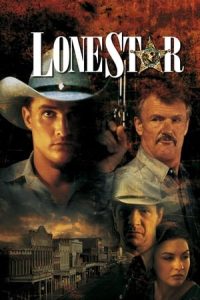- Source: Western Infirmary
The Western Infirmary was a teaching hospital situated in Yorkhill in the West End of Glasgow, Scotland, that was managed by NHS Greater Glasgow and Clyde. It was opened in 1874 and closed in 2015.
History
After the University of Glasgow moved from the city centre to the West End in the 1870s, distancing itself from the Royal Infirmary, a new teaching hospital was commissioned for the new university site and opened in 1874. The Western Infirmary opened as a voluntary hospital relying upon donations and bequests from members of the public. By 1890 there had already been 877 operations performed in the hospital.
Although the hospital initially had only 150 beds, by 1911 this had increased to over six hundred. In 1936 the decision was taken to establish a medical department. In 1930 a radiology department opened and, in 1936, a new ophthalmology department was officially opened, named the Tennent Memorial, with an entrance on Church Street. In 1938 the research capacity increased with the opening of the Gardiner Institute of Medicine. Taking its name from the family that had gifted almost £25,000 towards its foundation the institute worked in conjunction with the University of Glasgow.
In 1948 with the introduction of the National Health Service the Western Infirmary came under the management of the Glasgow Western Hospitals Board of Management.
A£3.5 million two-phase rebuilding programme was authorised by the Glasgow Corporation in June 1962. The 256–bed Phase 1 block was completed in 1974. After the completion of the nearby Gartnavel General Hospital in 1972, Phase 2 was indefinitely postponed in 1975.
In 2002, NHS Greater Glasgow & Clyde announced the results of a three-year consultation, the Greater Glasgow's Acute Services Review, wherein they outlined a £700 million modernisation plan for Glasgow's hospitals. As part of the plan, some services would be transferred to expanded facilities at Gartnavel General Hospital but most of them would be transferred to new facilities at the Queen Elizabeth University Hospital site. By 2010 the Western Infirmary had only 493 inpatient beds.
In autumn 2015, the Western Infirmary closed with the exception of the minor injuries unit. At the end of 2015 the Minor Injuries Unit moved a short distance to the Yorkhill Hospital site and the Western Infirmary closed completely on 6 December 2015.
In accordance with a commitment given by the hospital to the university in 1878 that the site would be offered back to the university if it was no longer required for healthcare, the university exercised its right to acquire the site and plans to redevelop it were approved in February 2017.
Nursing staff
At the time the Western Infirmary was opened individual hospitals conducted their own nurse training programmes. The probationers, as they were known, had to be 21 before they could start their training. The first Matron who trained nurses at the Western was Miss Clyde. She held this position for 22 years. The training included both learning on the ward and classroom teaching by appointed lecturers. Successful completion of the four year programme and passing the examination led to the award of the Certificate of the Infirmary.
Helen Gregory Smith RRC was appointed Matron of the Western Infirmary in 1906, a position she held until 1933. She completed her training at the Western in 1899. She was awarded a CBE in 1932 in recognition of her role as President, Scottish Matrons' Association, President, Benevolent Fund for Nurses in Scotland and for services to the nursing profession in Scotland.
Margaret Wallace, ARRC, was assistant matron at the Western from 1923 until her retirement in 1946. She trained at the Western from 1910-1914. Wallace was awarded the ‘Nightingale’ medal and £5 prize at the end of her training and also gained the first medical and surgical prizes for the November examinations. Wallace also served in the QAIMNS. She was a member of the Royal College of Nursing.
Around the time of the first World War a number of nurses who had either been trained or worked at the Western Infirmary went on to have distinguished careers including positions of high rank in both medical and military services. This reflected the high quality of nurse training at the Western Infirmary:
Agnes Carnochan Douglas began her nursing career at the Western Infirmary, Glasgow where she worked with the surgeon Sir William Macewen. He offered her the position of Matron at Erskine Hospital (formerly the Princess Louise Scottish Hospital for Limbless Sailors and Soldiers) when it opened in 1916.
Dame Katherine Watt, DBE RRC, served as a sister in WW1 and later joined the Ministry of Defence as Chief Nursing Officer.
Dame Emily Blair, DBE RRC, succeeded her as Matron-in-Chief of the RAF Nursing service and was subsequently Matron-in Chief of the British Red Cross.
Catherine Roy was Matron-in-Chief of Queen Alexandra’s Imperial Military Nursing service.
Services
There was a Maggie's centre at the hospital to help cancer patients, as well as the Glasgow Clinical Research Facility.
References
External links
Celebrating a Proud History: The Western Infirmary 1874−2015 on the NHS Greater Glasgow and Clyde website
Kata Kunci Pencarian:
- Laing O'Rourke
- Sophie, Adipatni Edinburgh
- Western Infirmary
- William Macewen
- Tom Brown (engineer)
- Western Hospital
- Gartnavel General Hospital
- Queen Elizabeth University Hospital
- Glasgow Royal Infirmary
- Ian Donald
- Helen Gregory Smith
- University of Glasgow
- 1
- 2
Cowboy Bebop: The Movie (2001)
Once Upon a Time… in Hollywood (2019)
Lone Star (1996)
The Good, the Bad and the Ugly (1966)
A Fistful of Dollars (1964)
No More Posts Available.
No more pages to load.














